Welcome to my new column, Listening Post Alpha, which will be published every Wednesday evening. This week, I’m returning to the world of Superstition and Folklore for a Part 2 of what I intend to be a four part series. If you haven’t seen Part 1, published before The Return, you can find that here. For the following installments, follow the links provided: Part 3 Part 4
TURKEY JERKY:
Since I’ve talked before about the meaning of the phrase “Gone Like a Turkey in the Corn”, this section won’t discuss that. We already know the Turkey, in the Return and in Fire Walk With Me is a reference to Laura Palmer made by Laura, and apparently this correlation is known to Sarah Palmer as well, in some way, shape or form. While most superstitions involving Turkeys don’t seem to have any bearing on Twin Peaks, there is an interesting tradition that originates in Ecuador (though it might not be very prevalent in this day in age) which states that a turkey, before being eaten, will essentially curse those who intend to kill and eat it. The way in which this was prevented has a strange resemblance to the events of FWWM. The turkey, while live, is doused with Aguardiente – colloquially called ‘Fire Water’ – which is a type of high proof rum. The turkey, as a result, become intoxicated, and is led around in circles until it is disoriented before being killed. While I couldn’t by any means suggest that this tradition is in any way known to or referenced by Frost and Lynch, it does share some interesting points with Laura’s final days – the cycle of drinking, drugs and finally, abuse which ends in murder. How and why the Turkey Jerky stands out to Sarah, we may never know, but I think it’s safe to say that the Turkey will forever remain a reference to Laura Palmer – immortalized on Hawk’s living map in such a form.
A TRADITIONAL GREETING AMONG FRIENDS:
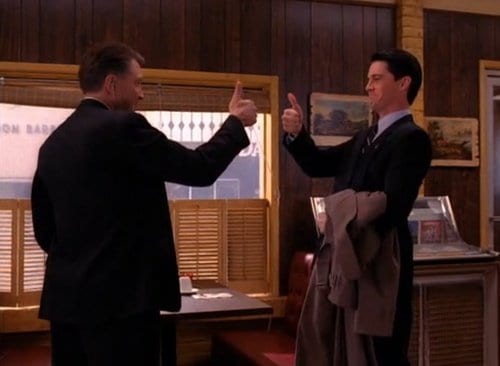
The thumbs-up as we know it is the all around feel-good expression shared between Cooper and his closest fellow, FBI or Twin Peaks Sheriff’s Department. But where does it come, from, what’s its history and how on earth could people be superstitious about it? This goes back all the way to ancient Rome, when the “rule of thumb” actually meant the decision between life or death in gladiatorial combat. Thumbs down has since been a universal gesture for ‘no’ but initially it meant death. That a combatant was found unfavourable by the crowd. This came from the suggestion that the thumbs of a dead person tended to curl downward in the hand during rigor mortis. In knowing the meaning of the reverse, we can identify that the opposite, the thumbs up, as a symbol “hope and faith in ultimate good and victory”.
An additional superstition which supports the idea of a thumbs up meaning ‘life’ is the old wives tale that a baby, born with their thumbs curled inwards, released the other fingers over the thumb each day after its birth, with the thumbs eventually rising up as they grow stronger.
These associations are ages old, and while we’ve lost these original elements, the thumbs up still signifies goodness, ‘yes’, positives and a firm affirmation of cause, all things which Cooper and Company use the thumbs up to convey. It is almost like his gesture of dedication to a cause – to ensure that justice be done, that good prevails and that all is a-okay with the world. Every time that the thumbs-up is flashed by Cooper or his associates in Seasons One or Two, the gesture is made with firmness and absolute certainty – not a moment of hesitance to be seen. No wonder the Doppelganger’s thumbs up seems so ominous, as he’s most certainly not attempting to wish Gordon, Albert and Tammy a long, happy life and ultimate victory.
HOW ABOUT THAT CREAMED CORN?
We know that the symbol of Creamed Corn, Corn and (as of the Return) Corn based products all comes down to an arbitrary decision made by Lynch for Season 2, Episode 2 (or Episode 9 of the overall Original Run) known as Coma, wherein we are introduced to corn, and precisely creamed corn, as an element of significance in the Twin Peaks universe. Donna is working the meals on wheels, and Mrs. Tremond (or Chalfont) states that she requested no creamed corn. The grandson (also called Pierre and possibly a ‘magician’) snaps his fingers and makes the creamed corn disappear from her plate and appear in his hands. These two characters appear in FWWM several times and are known lodge entities. We learn that creamed corn is Garmonbozia, pain and sorrow or suffering – which Lodge entities, specifically Black Lodge entities, feed off of. We see creamed corn in the convenience store, corn in DoppelCooper’s diner meal, and in his snack foods, as well as…his and Dougie’s absolutely disgusting vomit. In the Secret Diary of Laura Palmer, she names creamed corn as her favourite meal. In direct relation to ‘Turkey’ is again the idea of the turkey being in the corn – lost to the pain and suffering of her life.
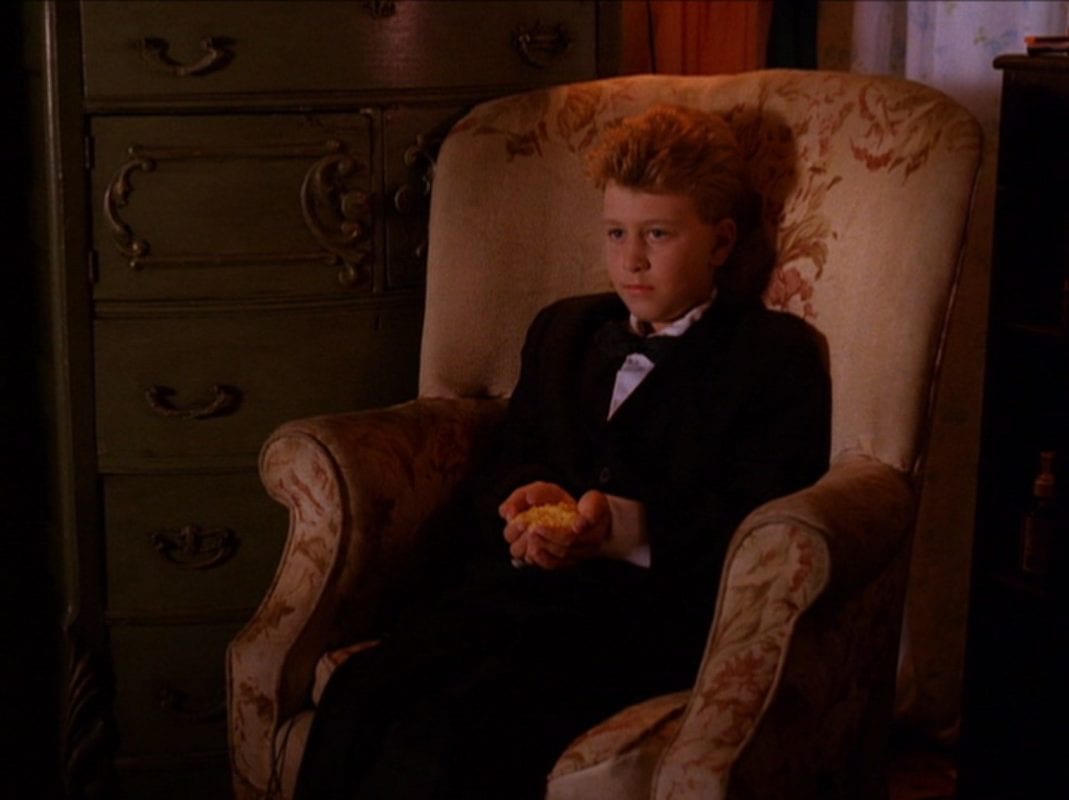
And that is where the superstitions and beliefs surrounding corn start to make sense. Corn is a prominent factor in many Native American and South Native American cultures because it was literally the foundation of their livelihoods, indeed, of their survival altogether. Take Hawk’s map into consideration again – if the corn turns black, that is a bad omen, because it signifies the metaphorical destruction of life.
To waste corn was practically unforgivable. One, generalized notion is that corn was created by the Great Spirit during a famine, and it’s waste would doom a person. The Omaha tribe shares an odd view with the Egyptians about Corn – that a spirit inhabited it, and in particular red corn – which wasn’t eaten, as it was believed that the corn spirit (a fire element) would inhabit and cause harm.
All of this together paints an interesting picture, but a non-superstition element brings the most interesting discussion to the fore – Corn is life, especially in connection with the Lodge entities. Settlers in the Twin Peaks area came looking for gold. A cross connection here would be that corn and gold have long been connected in far more than colour, due to their relative worth to the cultures in which they ‘originated’ (I use this world very lightly). And gold, as a metal, conducts a current. E-lec-tri-city.
Electricity=Life=Corn=Gold
Take from that what you will.
TWO BLOODY SARAH PALMERS:
Alcohol is all over the Twin Peaks world. Various characters imbibe various drinks to various degrees. We name cocktails after Twin Peaks characters (An alcoholic Arnold Palmer is a Leland Palmer. Yum). There are at least three prominent bar locations, and one that serves as the backdrop to major sequences of plot and character development.
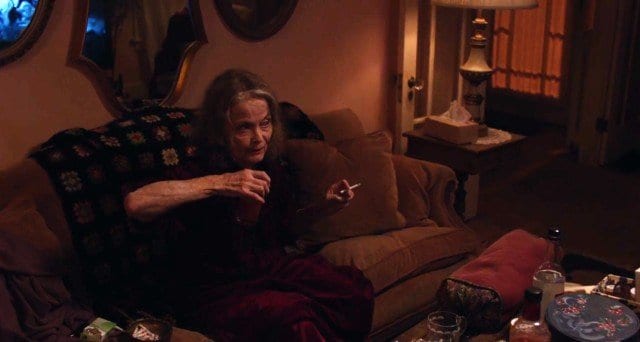
The automatic association between alcohol and superstition is that a chronic alcoholic must be a sinner and morally loose. This, of course, we know to be untrue to life, but that doesn’t stop the association from forming, nor is it necessarily the case with certain characters on the show. There is a certain stigma attached to a person who drinks different kinds of alcohol – beer drinkers bring a very different image to mind that wine drinkers.
While this stigma (which does factor into superstition to some degree) does rear it’s head, it is more interesting to divide the types of alcohol by character, than it is to group them all together. Wine drinkers – Gordon, Albert, Tammy – are the thinkers, the highly educated, the philosophs. The hard liquor drinkers – notable Diane and Sarah Palmer – are the ones to whom life has been the most cruel. The Champagne drinkers, our Mitchum brothers, are high rollers. This is perhaps more symbolic than superstitious, but it was worth the mention here.
GOT A LIGHT?
The easiest connection to make about smoking in Twin Peaks is the ever-present omen of fire. Early superstitions regarding the act of smoking are interesting in context as well. It was believed in many early cultures that any burn sacrificial offerings – be they people, animals or vegetation – to gods would require the smoke to drift upwards in order to have been accepted. Similar in this context is the vision of the young boy’s spirit – like a yellow flame, or waft of smoke – drifts upwards in Carl Rodd’s, a most prolific smoker, vision. Carl’s visions could be positive – goodness augmented by the taint of visions?
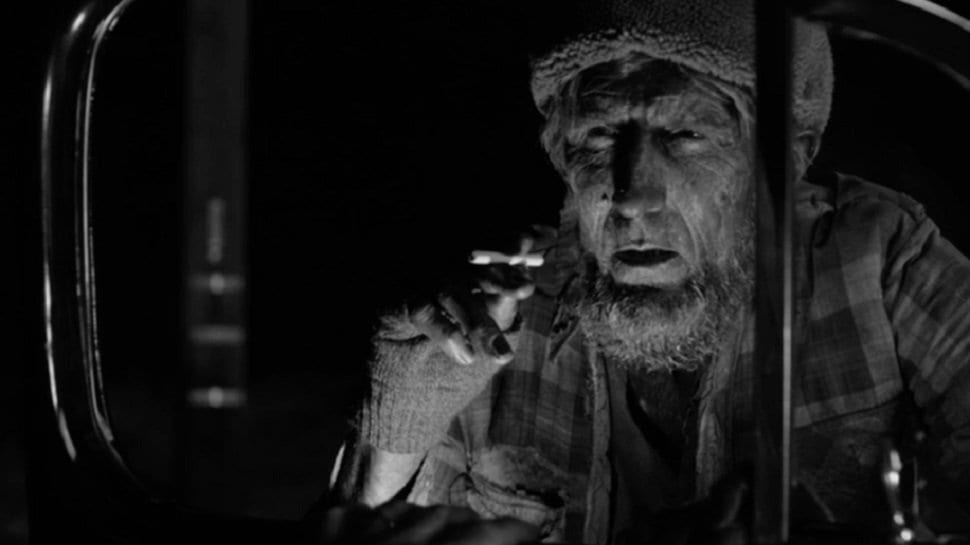
The Woodsmen appear charred and are seen, not smoking exactly, but looking for that light. Victims, it is heavily suggested, of the fire at the dam in Twin Peaks, who have become something more. Diane is a heavy smoker – a tulpa, whose original parsonage was used as a sacrifice of a sort as well. Laura Palmer, an intended sacrifice in the pursuit of a vessel or of garmonbozia. Sarah Palmer, her life certainly up in smoke – has she sacrificed her humanity to contain a being of total evil?
Any connections here are tenuous, but worthy, at least, of mentioning.
DEW EEHT I ,GNIR SIHT HTIW:
At its very core, every ring is a circle, and every circle is a representation of eternity. The first rings to be worn on fingers were likely fashioned in Egypt. Wedding rings, in particular, take on this connotation of forever easily – the ring is a symbol of forever, not because it is a priceless diamond that was painstakingly chosen, but because the ring, a circle, implies the everlastingness of the union. Much more has been said about the Owl Cave Ring than I intend to get into here, but I think it goes without saying that the concept of eternity, especially in relationship with the Owl Cave Ring, is obvious. You put it on, you’re doomed forever to live a shadow life as a Dweller inside the Black Lodge. The first engagement rings that we know of were conceived of by the ancient Hebrews who believed in the ring as a symbol of a formal contract or binding – bound to the ring, bound to the owner of the ring. It’s been debated who that might be (BOB?) but the truth of the matter is that the who is unimportant – it’s the Lodge to which a person is bound.
Also significant is the fact that the Owl Cave Ring is essentially a signet, which is akin to a family seal. In that sense, the Ring is then the seal of the Owls, whatever they truly are.
Ray Monroe, Dougie Jones, and Doppelcoop all wear the ring on their left hand, ring finger. Teresa Banks and Laura however, wear it on the right hand, ring finger.
For most, when married, the ring would be worn on the fourth finger of the left hand, like with Ray, Dougie and Doppelcoop. Catholics in particular, as well as citizens of a variety of European countries, wear the engagement ring on the right hand fourth finger, like Laura and Teresa, but an engagement ring can also be worn on the left hand fourth finger in other religious traditions or cultures. 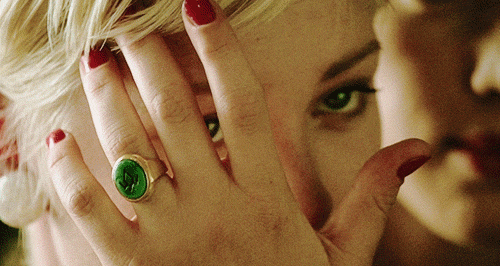
The fourth finger, as Gordon points out is the spiritual mound (which I will elaborate on in the next Superstition series piece) but it was also known as the ‘Vena Amoris‘ or the ‘Vein of Love’ as it was believed that the vein in that finger ran directly to the heart, thus making it the seat of love.
Additionally, considering the connotation of old that a bride became the property of the bridegroom, the reasoning for wearing a ring on the left hand, or the subservient or subordinate hand, was that she was now in a position subservient to him. The right hand was considered the hand of power and authority (i.e. my right hand man).
MIKE, however, wears it on his pinky (likely because it didn’t fit any other finger), which has connotations with men determined to remain bachelors in the 40’s in Europe, which has long since fallen out of the norm. Cooper’s gold ring that is taken by the Giant is also worn on the pinky finger. Perhaps this has something to do with his many failed relationships? Leo has one as well; despite his marriage, he acts like a bachelor, at least in terms of his many relationships with other women.
On a different note, MIKE talks about a very different sort of ring that the physical – the ‘golden’ circle of appetite and satisfaction which bound he and BOB together.
Rings are infinite, never ending…just like TWIN PEAKS. Some things will go on forever. Relationships, cycles of abuse, of trauma, or poor decision making, and so on and so forth. After all, what is an infinity symbol but one rings twisted to make two?
DEALING WITH FATE:
Playing cards are motif that crops up in Twin Peaks and The Return all over the place. Their presence is most easily seen in the One Eyed Jack’s sequences, but they are littered around the scenery and prop placement in The Return as well.
Surprisingly enough, the one major superstition with is turned on it’s head in Twin Peaks is that women are unlucky in a room where a game of chance is being played. But then again, Ben and Jerry are always liable to mix business and pleasure and we all know how well that tends to turn out. 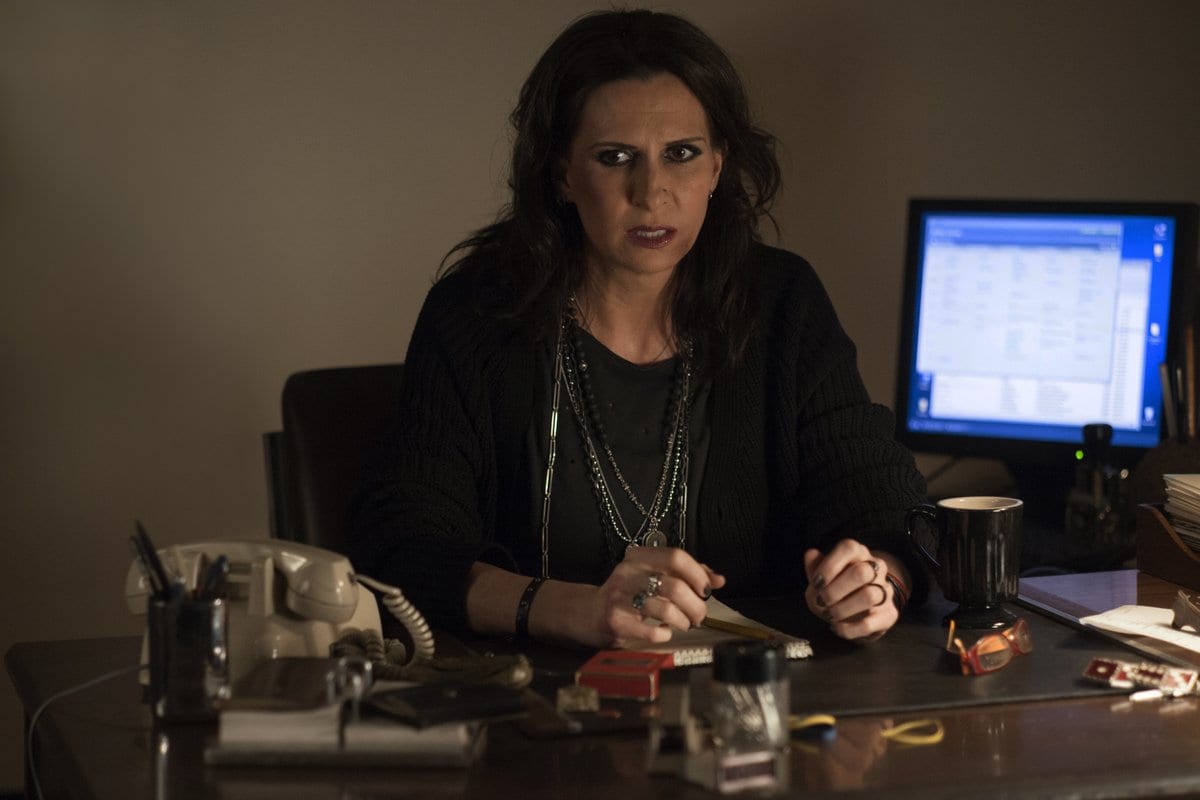
No matter where the cards crop up (or the dice) there seems to be bad luck following those persons, in some way, shape or form. Naido, at least visually, pulls the lever on the bell machine, which is reminiscent of a slot machine pull – we all know what happened to her. Lorraine, from the Return, has a dice keychain. Ike the Spike rolls his dice in some statistical experiment. The Casino owning Mitchum’s experience bad luck in the form of insurance fraud, and Bushnell Mullins, who has a die on his desk, is being played by his best insurance agent – Tony.
All, that is, until Dale Cooper shows up, and one thing we know about Dale Cooper from way back when in Season 2 is that he knows how to gamble and has good luck of it (if only partly because his Uncle Al, who dabbled as a magician, taught him to count cards). Dale also likes to “bring back a 10 to 15 % return” when he gambles with the company stake.
Good for Cooper and all of those who have benefitted from his catching good luck, right? Well, Yes and No. There is a common saying that if a person is lucky at games of chance, they are probably unlucky in love. And dear old Coop sure fits that bill. Caroline, Annie, now Diane, and to a lesser extent Audrey. And even, to a certain degree and in regards to a certain type of love, Laura. The superstition comes from the common belief that luck cannot work in your favor for two things at once – ie, if Cooper has luck in cards, he cannot also have luck in love. Additionally, both love and cards/dice are seen as ‘games’ of chance. In cards, at least, the law of probability can help you win, but in love there’s no such guarantee.
Stay Tuned Next week for Part 3 of this ongoing series!
A Treasury of American Superstitions, by Claudia de Lys, Copyright MCMXLVIII




